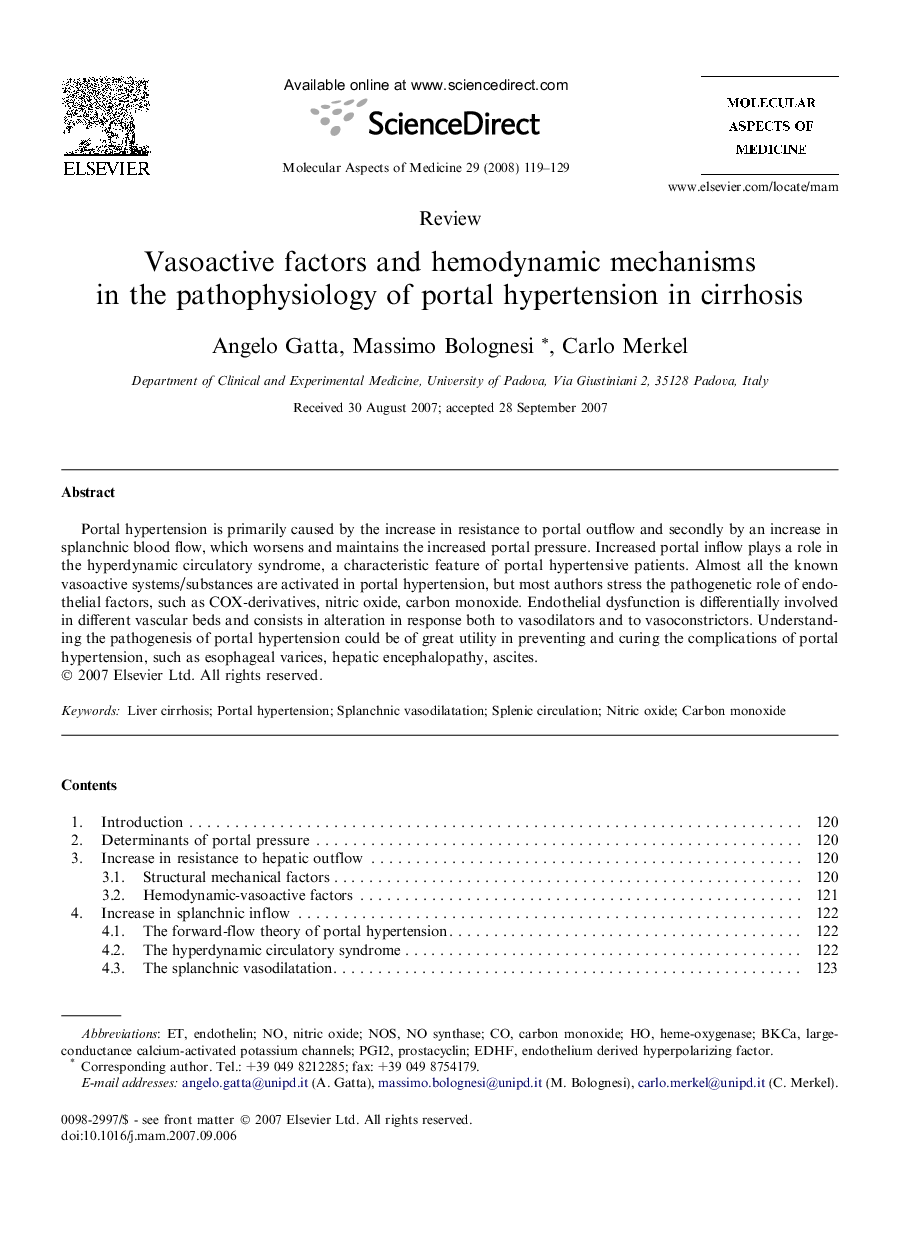| Article ID | Journal | Published Year | Pages | File Type |
|---|---|---|---|---|
| 1995936 | Molecular Aspects of Medicine | 2008 | 11 Pages |
Portal hypertension is primarily caused by the increase in resistance to portal outflow and secondly by an increase in splanchnic blood flow, which worsens and maintains the increased portal pressure. Increased portal inflow plays a role in the hyperdynamic circulatory syndrome, a characteristic feature of portal hypertensive patients. Almost all the known vasoactive systems/substances are activated in portal hypertension, but most authors stress the pathogenetic role of endothelial factors, such as COX-derivatives, nitric oxide, carbon monoxide. Endothelial dysfunction is differentially involved in different vascular beds and consists in alteration in response both to vasodilators and to vasoconstrictors. Understanding the pathogenesis of portal hypertension could be of great utility in preventing and curing the complications of portal hypertension, such as esophageal varices, hepatic encephalopathy, ascites.
